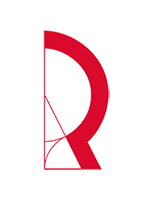No products in the cart.
Nuove Tendenze Leonardo Dudreville and the avant-garde in the 1910s
An exhibition narrating the work of artist Leonardo Dudreville and the activity of the Nuove Tendenze group that alongside Futurism contributed to changing the aesthetics of the early 20th century15 October 2022 – 8 January 2023
“I have fixed and realised graphically
the synthesis of the state of mind determined in me
at the contact of my psychic individuality, internal
with the life-environment, external, that surrounds me”.
(Leonardo Dudreville)
Lucca, 14 October 2022. Not only Futurism. At the beginning of the 20th century, there were many artistic realities seeking a new aesthetic and, among them, the group Nuove Tendenze founded in Milan in 1913 by the critic Ugo Nebbia and the artist Leonardo Dudreville, to whom the Fondazione Ragghianti is dedicating the exhibition NUOVE TENDENZE. Leonardo Dudreville and the avant-garde in the 1910s, curated by Francesco Parisi, from 15 October 2022 to 8 January 2023.
Interested in musical themes and states of mind, the Nuove Tendenze movement has many similarities with secessionist groups on a European scale, and is characterised by absolute experimental freedom. The exhibition offers an interpretation within the context of the international avant-gardes and the Italian “fringe exhibitions”, freeing Nuove Tendenze from the label of para-futurist, although it has many tangents with Marinetti’s movement, especially in terms of communication.
Thanks to material from the Leonardo Dudreville Archive in Monza and various private and public collections, NUOVE TENDENZE. Leonardo Dudreville and the avant-garde in the 1910s analyses the artistic context in which Nuove Tendenze was formed, investigating some moments in the artistic adventure of Leonardo Dudreville (Venice, 1885 – Ghiffa, Piedmont, 1976), starting with his visit with Umberto Boccioni to Vittore Grubicy’s studio, up to his forays into Divisionist technique, and displaying a corpus of works produced between 1905 and 1919.
The exhibition opens with a section devoted to the developments of Divisionism in the first decade of the 20th century, in which Dudreville’s works demonstrate an unprecedented openness towards expressive and formal values that point towards an autonomous use of the pictorial sign, light and colour. The tour then continues with a part dedicated to the exhibition Mostra dei Rifiutati del Cova (1912).
The second part of the exhibition, the focus of the research, is dedicated to Dudreville’s participation in “fringe exhibitions” such as Nuove Tendenze, which constitutes one of the main exhibition episodes in which the Milanese artistic avant-garde elaborated an alternative operative strategy compared to the official channels linked to the academic world.
The display of works and documents – publications, letters, photographs, postcards – from this part of the exhibition recounts how the exhibition Nuove Tendenze (1914) sanctioned the birth of an autonomous and self-sufficient exhibition project, linked to the identification of an avant-garde aesthetic position that went beyond the exclusively contextual logic of the exhibitions Arte Libera of 1911 and Rifiutati del Cova of 1912.
Alongside the works by Dudreville exhibited on that occasion were works by Carlo Erba, Achille Funi, Mario Chiattone, Adriana Bisi Fabri, Antonio Sant’Elia and Marcello Nizzoli, all part of the project.
In this context, the central role of the Famiglia Artistica association in the local art milieu also stands out, which guaranteed the younger, militant artists a free exhibition centre without admission juries: all members of Nuove Tendenze, including the critics, participated in the social and artistic life of this reality.
NUOVE TENDENZE. Leonardo Dudreville and the avant-garde in the 1910s also includes a number of works exhibited in the Galleria Centrale d’Arte in the former Caffè Cova in April 1919, a useful context for interpreting the longevity of the Milanese Futurist phenomenon, but which also documents Dudreville’s last direct relationship with Boccionian and Marinettian Futurism.
In January 1920, in fact, Dudreville signed with Funi, Russolo and Sironi the manifesto Contro tutti i ritorni in pittura, which ideally closes the exhibition by revealing his approach to a new theoretical and aesthetic vision.
The exhibition is accompanied by a book-catalogue published by the Fondazione Ragghianti with Silvana Editoriale, which will include reproductions of the works on display, documents and period materials, and essays by curator Francesco Parisi with those by Alessandro Botta, Niccolò D’Agati, Roberto Dulio, Elena Pontiggia and Sergio Rebora, scholars specialised in the subject.
The exhibition is realised with the support of the Fondazione Cassa di Risparmio di Lucca, of Anthilla Sgr and Banco BPM.
For further information
Press Office
Lara Facco P&C
+39 349 2529989
press@larafacco.com
www.larafacco.com
Fondazione Centro Studi sull’Arte Licia e Carlo Ludovico Ragghianti
Monumental Complex of San Micheletto
Via San Micheletto, 3 – 55100 Lucca
+39 0583 467205
info@fondazioneragghianti.it

